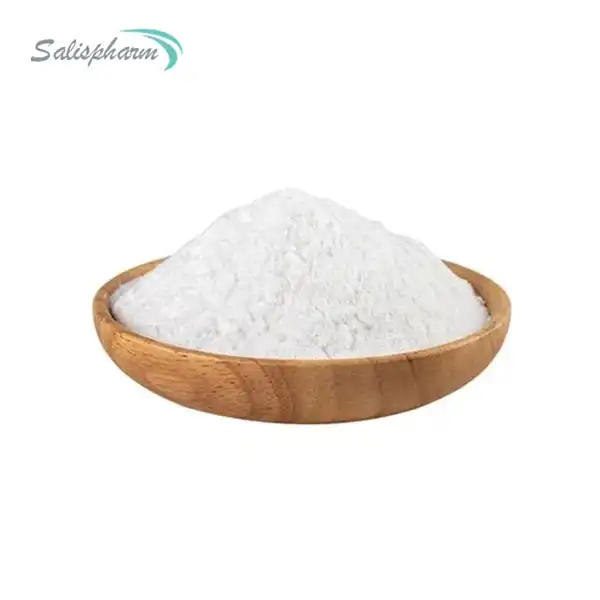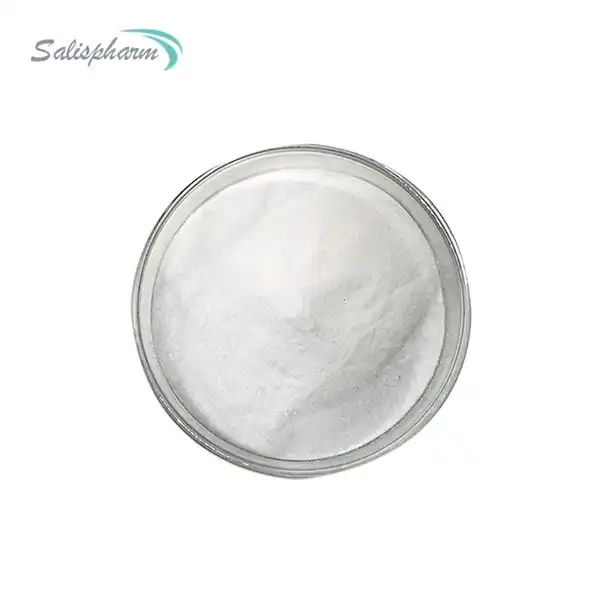Spironolactone, a medication typically known for its use in treating heart failure, high blood pressure, and edema, has also found a place in the dermatological world. When women take spironolactone powder, they may be doing so for a variety of reasons, from managing hormonal acne to addressing hair loss. But what exactly happens when a woman introduces this potassium-sparing diuretic and anti-androgen into her system? This article will explore the effects, benefits, and potential risks associated with spironolactone use in women.
How Does Spironolactone Affect Hormone Levels in Women?
Spironolactone is recognized for its ability to block the effects of androgens, such as testosterone, which can contribute to the development of acne and hair loss. By inhibiting the action of these hormones, spironolactone can help regulate oil production in the skin, leading to a decrease in acne lesions. The impact on hormone levels is nuanced and involves a complex interplay of androgen receptors and hormonal balance.
At its core, Spironolactone Powder works as an androgen receptor antagonist. This means it competitively binds to androgen receptors, preventing androgens like testosterone and dihydrotestosterone (DHT) from exerting their full effects on target tissues. In women, this can lead to a reduction in androgen-related symptoms without significantly altering overall hormone levels.
The medication also has a mild progestogenic effect, which can contribute to its anti-androgenic properties. This dual action makes spironolactone particularly effective in managing conditions exacerbated by androgen sensitivity, such as hormonal acne and female pattern hair loss.
It's important to note that while spironolactone affects hormone activity, it doesn't typically cause a significant decrease in circulating androgen levels. Instead, it primarily works by blocking the effects of these hormones at the receptor level. This mechanism of action helps explain why spironolactone can be effective in treating androgen-sensitive conditions without causing systemic hormonal imbalances.
What Are the Benefits and Risks of Using Spironolactone Powder for Women?
Benefits:
1. Acne Treatment: Spironolactone Powder has shown significant efficacy in treating hormonal acne, particularly in adult women. By reducing the effects of androgens on sebaceous glands, it can decrease oil production and inflammation, leading to clearer skin.
2. Hair Loss Management: For women experiencing androgenetic alopecia, spironolactone may help slow hair loss and potentially promote regrowth by mitigating the effects of androgens on hair follicles.
3. Hirsutism Reduction: Women with excessive facial or body hair may benefit from spironolactone's anti-androgenic effects, which can help reduce unwanted hair growth over time.
4. PCOS Symptom Management: In women with polycystic ovary syndrome (PCOS), spironolactone can help manage symptoms related to androgen excess, including acne and hirsutism.
5. Potential Mood Benefits: Some studies suggest that spironolactone may have mild mood-enhancing effects in some women, possibly due to its impact on hormone balance.
Risks and Side Effects:
1. Hyperkalemia: As a potassium-sparing diuretic, spironolactone can lead to elevated potassium levels, which can be dangerous if not monitored.
2. Menstrual Irregularities: Some women may experience changes in their menstrual cycle, including irregular periods or spotting.
3. Breast Tenderness and Enlargement: Due to its anti-androgenic properties, spironolactone may cause breast-related side effects in some women.
4. Fatigue and Dizziness: Especially when starting treatment, some women may experience fatigue or lightheadedness due to changes in blood pressure.
5. Interactions with Other Medications: Spironolactone can interact with various drugs, including ACE inhibitors, angiotensin receptor blockers, and potassium supplements.
6. Potential Fetal Harm: Spironolactone is contraindicated during pregnancy due to potential feminization of male fetuses.
7. Electrolyte Imbalances: Besides potassium, spironolactone can affect other electrolyte levels, necessitating regular monitoring.
The benefits and risks must be carefully weighed, often in consultation with a healthcare provider. Individual factors such as age, overall health, and concurrent medications play a crucial role in determining the appropriateness of spironolactone treatment.

Can Spironolactone Powder Be Used for Hair Loss in Women?
Spironolactone's role in hair loss treatment for women is a topic of growing interest. Some women turn to spironolactone as an alternative to more traditional, and potentially more harmful, treatments for androgenetic alopecia. The anti-androgen properties of spironolactone may help slow hair loss and, in some cases, promote regrowth by reducing the impact of androgens on hair follicles.
The mechanism by which spironolactone may benefit hair growth involves its ability to block DHT, a potent androgen implicated in hair follicle miniaturization. By reducing DHT's effects on susceptible hair follicles, spironolactone may help maintain existing hair and potentially encourage new growth.
Studies on the efficacy of spironolactone for female pattern hair loss have shown promising results. A retrospective study published in the International Journal of Women's Dermatology found that 74.3% of women treated with spironolactone for androgenetic alopecia reported stabilization or improvement in their hair loss.
However, it's important to note that the response to spironolactone for hair loss can vary significantly among individuals. Factors such as the extent of hair loss, age, and underlying hormonal balance can all influence the treatment's effectiveness. Additionally, visible results may take several months to become apparent, requiring patience and consistent use.
Dosage and Administration Considerations:
When prescribed for dermatological conditions like acne or hair loss, spironolactone is typically administered at lower doses than when used for cardiovascular indications. Starting doses often range from 25 to 50 mg daily, with gradual increases as needed and tolerated.
The powder form of spironolactone is less common than tablets but may be prescribed in certain situations. When using spironolactone powder, accurate dosing is crucial. Patients should follow their healthcare provider's instructions carefully and use precise measuring tools to ensure proper administration.
Long-term Use and Monitoring:
For women using spironolactone long-term, regular monitoring is essential. This typically includes:
1. Blood pressure checks: Spironolactone can lower blood pressure, which may be beneficial for some but problematic for others.
2. Electrolyte panels: To monitor potassium levels and other electrolytes.
3. Kidney function tests: To ensure the medication isn't adversely affecting renal function.
4. Hormone level assessments: While not always necessary, some providers may check hormone levels periodically.
5. Regular dermatological evaluations: To assess the effectiveness of treatment for skin or hair conditions.
Lifestyle Considerations:
Women taking spironolactone should be aware of certain lifestyle considerations:
1. Hydration: Adequate water intake is important, as spironolactone acts as a diuretic.
2. Dietary potassium: While on spironolactone, women should be cautious about consuming large amounts of potassium-rich foods or supplements.
3. Sun protection: Some users may experience increased sun sensitivity, making proper sun protection even more crucial.
4. Alcohol consumption: Spironolactone can enhance the effects of alcohol, so moderation is advised.
5. Exercise: Some women may need to adjust their exercise routines if they experience dizziness or fatigue, especially when starting treatment.
Conclusion
The use of spironolactone powder in women is a decision that should not be taken lightly. It is essential to consider the full scope of effects on hormone levels, the potential benefits for conditions like acne and hair loss, and the risks involved. While spironolactone can be a valuable tool in managing various androgen-related conditions in women, its use requires careful consideration, appropriate monitoring, and ongoing communication with healthcare providers.
As research continues to evolve, our understanding of spironolactone's long-term effects and optimal use in women will likely expand. For now, it remains an important option in the dermatological and endocrinological toolkit, offering hope for many women struggling with androgen-sensitive conditions. As with any medication, the guidance of a healthcare professional is crucial to ensure safe and effective use, tailored to each individual's unique needs and health profile.
If you are also interested in this product and want to know more product details, or want to know about other related products, please feel free to contact iceyqiang@gmail.com.
References:
1. Layton, A. M., et al. (2017). Oral Spironolactone for Acne Vulgaris in Adult Females: A Hybrid Systematic Review. American Journal of Clinical Dermatology, 18(2), 169-191.
2. Rathnayake, D., & Sinclair, R. (2010). Use of spironolactone in dermatology. Skinmed, 8(6), 328-332.
3. Gupta, A. K., & Charrette, A. (2015). The efficacy and safety of 5α-reductase inhibitors in androgenetic alopecia: a network meta-analysis and benefit-risk assessment of finasteride and dutasteride. Journal of Dermatological Treatment, 26(2), 156-161.
4. Hoedemaker, C., et al. (2017). Spironolactone in the treatment of female pattern hair loss: A retrospective study of 80 patients. International Journal of Women's Dermatology, 3(1), 30-36.
5. Rossi, A., et al. (2012). Comparative effectiveness of finasteride vs Serenoa repens in male androgenetic alopecia: a two-year study. International Journal of Immunopathology and Pharmacology, 25(4), 1167-1173.
6. Levin, C., & Maibach, H. (2002). Exploration of "alternative" and "natural" drugs in dermatology. Archives of Dermatology, 138(2), 207-211.
7. Amin, K., et al. (2020). Spironolactone for the treatment of acne in women: a retrospective study of 110 patients. International Journal of Women's Dermatology, 6(2), 105-109.
8. Zaenglein, A. L., et al. (2016). Guidelines of care for the management of acne vulgaris. Journal of the American Academy of Dermatology, 74(5), 945-973.e33.








